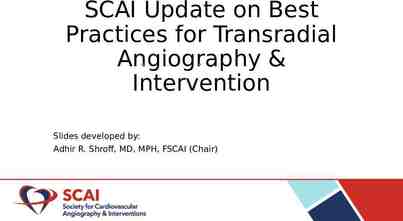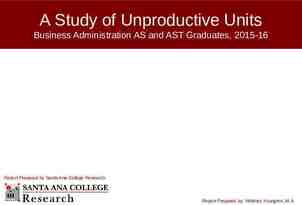g n i h Teac g n i k a e p S
60 Slides1.63 MB

g n i h Teac g n i k a e p S

n o i t a c i n u m m o l a C c l i g o Ora g a d e P n i h s c l r l i a e Sk s e R

Conversational Discourse The benchmark of successful language acquisition is almost always the demonstration o fan ability to accomplish pragmatic goals through Interactive discourse with other speakers of the language.

Teaching Pronunciation Because the overwhelming majority of adult learners will never acquire an accent-free command of a foreign language, should a language program that emphasizes whole language, meaningful contexts, and automaticity of production focus on these tiny phonological details of language? The answer is yes.

Accuracy and Fluency In spoken language the question we face as teachers is: How shall we prioritize the two clearly important speaker goals of accurate (clear, articulate, grammatically and phonologically correct) language and fluent (flowing, natural) language? It’s now very clear that fluency and accuracy are both important goals to pursue in CLT (Communicative Language Teaching) and/or TBLT (Task-Based Language Teaching). While fluency may in many communicative language courses be an initial goal in language teaching, accuracy is achieved to some extent by allowing students to focus on the elements of phonology, grammar, and discourse in their spoken output. Fluency is probably best achieved by allowing the “stream” of speech to “flow”.

Affective Factors One of the major obstacles learners have to overcome in learning to speak is the anxiety generated over the risks of blurting things out that are wrong, stupid, or incomprehensible. Because of the language ego that informs others that “you are what you speak”, learners are reluctant to be judged by hearers. Our job as teachers is to provide the kind of warm, embracing climate that encourages students to speak, however halting or broken their attempts may be.

The Interaction Effect The greatest difficulty that learners encounter in attempts to speak is not the multiplicity of sounds, words, phrases, and discourse forms that characterize any language, but rather the interactive nature of most communication. Conversations are collaborative as participants engage in a process of negotiation of meaning. So, for the learner, the matter of what to say is often eclipsed by conventions of how to say things, when to speak, and other discourse constraints.

Questions about Intelligibility A now outdated model of English language teaching assumed that intelligibility should be gauged by whether nonnative speakers are intelligible to native speakers. Materials, technology, and teacher education programs are being challenged to grapple with the issue if intelligibility, and to adopt new standards of “correctness” and new attitudes toward “accent” in order to meet current global realities.

The Growth of Spoken Corpora The intelligibility issue is now being described as a rapid growth of readily available corpora of spoken language – one of the key developments in research on teaching oral production. As the size and scope of corpora expand, so our understanding of what people really say is informed by empirical evidence. Of special interest to teachers of English worldwide is the wider range of language varieties that are now available through such projects as the International Corpus of English, which contains data from the spoken Englishes of Hong Kong, New Zealand, the United Kingdom, Ireland, Nigeria, the Caribbean, and others.

Genres of Spoken Language Research on spoken language has recently attended to a specification of differences among various genres of oral interaction, and how to teach those variations. What is judged to be acceptable and/or correct varies by contexts, or genres, such as small talk, discussion, and narrative, among others. As research more accurately describes the constraints of such genres on spoken language, we will be better able to pinpoint models of appropriateness for students’ specific purposes in learning English.

n e k o p S f o s e e Typ g a u g n La

In beginning through intermediate levels of proficiency, most of the efforts of the students in oral production come in the form of conversation, or dialogue. As you plan and implement techniques in your interactive classroom, make sure your students can deal with both interpersonal and transactional with whom they are quite familiar.

g n i k a e p S s e k a ? t M l u t c ffi i W ha D

Clustering Fluent speech is phrasal, not word-by-word. Learners can organize their output both cognitively and physically through such clustering.

Redundancy The speaker has and opportunity to make meaning clearer through the redundancy of language. Learners can capitalize on this feature of spoken language.

Reduced Forms Contractions, elisions, reduced vowels, etc., all form special problems in teaching spoken English. Students who don’t learn colloquial contractions can sometimes develop a stilted, bookish quality of speaking that in turn stigmatizes them.

Performance Variables One of the advantages of spoken language is that the process of thinking as you speak allows you to manifest a certain number of performance hesitations, pauses, backtracking, and corrections. Learners can actually be taught how to pause and hesitate. For example, in English our “thinking time” is not silent; we insert certain “fillers” such as uh, um, well, you know, I mean, like, etc. one of the most salient differences between native and nonnative speakers of a language is in their hesitation phenomena.

Colloquial Language Make sure your students are reasonably well acquainted with the words, idioms, and phrases of colloquial language and that they get practice in producing these forms.

Rate of Delivery Another salient characteristic of fluency is rate of delivery. One of your tasks in teaching spoken English is to help learners achieve an acceptable speed along with other attributes of fluency.

Stress, Rhythm, and Intonation This is the most important characteristic of English pronunciation. The stress-timed rhythm of spoken English and its intonation patterns convey important messages.

Interaction Learning to produce waves of language in a vacuum –without interlocutors- would rob speaking skill of its richest component: the creativity of conversational negotiation.

s l l i k s o r c a M l d a n r a O f o r o Mic n o i t a c i n u m Com

Microskills 1. Produce chunks of language of different lengths. 2. Orally produce differences among the English phonemes and allophonic variants. 3. Produce English stress patterns, words in stressed and unstressed positions, rhythmic structure, and intonational contours. 4. Produce reduced forms of words and phrases. 5. Use an adequate number of lexical units in order to accomplish pragmatic purposes.

6. Produce fluent speech at different rates of delivery. 7. Monitor your own oral production and use various strategic devices (pauses, fillers, self-corrections, backtracking) to enhance the clarity of the message. 8. Use grammatical word classes, systems, word order, patterns, rules, and elliptical forms. 9. Produce speech in natural constituents in appropriate phrases, pause groups, breath groups, and sentences. 10. Express a particular meaning in different grammatical forms.

Macroskills Use cohesive devices in spoken discourse. Accomplish appropriately communicative functions according to situations, participants, and goals. Use appropriate registers, implicature, pragmatic conventions, and other sociolinguistic features in face-to-face conversations. Convey links and connections between events and communicate such relations as main idea, supporting idea, new information, given information, generalization, and exemplification. Use facial features, kinesics, body language, and other nonverbal cues along with verbal language to convey meanings. Develop and use a battery of speaking strategies, such as emphasizing key words, rephrasing, providing a context for interpreting the meaning of words, appealing for help, and accurately assessing how well your interlocutor is understanding you.

m o o r s s a l C f o s e e c p n a Ty m r o f r e P g n i k a e Sp

Imitative A very limited portion of classroom speaking time may legitimately be spent generating “human tape recorder” speech. Imitation of this kind is carried out not for the purpose of meaningful interaction, but for focusing on some particular element of language form.

Intensive Intensive speaking goes one step beyond imitative to include any speaking performance that is designed to practice some phonological or grammatical aspect of language. Intensive speaking can be self-initiated, or it can even form part of some pair work activity, where learners are “going over” certain forms of language.

Responsive A good deal of student speech in the classroom is responsive: short replies to teacher or student-initiated questions or comments. These replies are usually sufficient and do not extend into dialogues.

Transactional (dialogue) Transactional language, carried out for the purpose of conveying or exchanging specific information, is an extended form of responsive language. Conversations, for example, may have more of a negotiative nature to them than does responsive speech.

Interpersonal (dialogue) These conversations are a little trickier for learners because they can involve some or all of the following factors: A casual register Colloquial language Emotionally charged language Slang Ellipsis Sarcasm A covert “agenda”

Extensive (monologue) Finally, students at intermediate to advanced levels are called on to give extended monologues in the form of oral reports, summaries, r perhaps short speeches. Here the register is more formal and deliberative. These monologues can be planned or impromptu.

g n i h c a e T r o f s s e l l l i p i k c S n i g r n P i k a Spe

Focus on both fluency and accuracy, depending on your objective. Provide intrinsically motivating techniques. Encourage the use of authentic language in meaningful contexts. Provide appropriate feedback and correction. Capitalize on the natural link between speaking and listening. Give students opportunities to initiate oral communication. Encourage the development of speaking strategies.

n o C g n i h c a e T n o i t a s r e v

Indirect approach: In which learners are more or less set loose to engage in interaction. Implies that one does not actually teach conversation, but rather that students acquire conversational competence, peripherally, by engaging in meaningful tasks. Direct approach: involves planning a conversation program around the specific microskills, strategies, and processes that are involved in fluent conversation. Explicitly calls students’ attention to conversational rules, conventions, and strategies.

Sample tasks teaching various aspects of conversation an oral grammar practice technique Conversation – indirect (strategy consciousness-raising) Conversation – direct (gambits) Conversation – transactional (ordering from a catalog) Meaningful oral grammar practice (modal auxiliary would) Individual practice (oral dialogue journals)

n o r P g n i h Teac n o i t a i c n u

Current approaches to pronunciation contrast starkly with the early approaches. Rather than attempting only to build a learner’s articulatory competence from the bottom up, and simply as the mastery of a list of phonemes and allophones, a top-down approach is now taken in which the most relevant features of pronunciation-stress, rhythm, and intonation are given high priority. Instead of teaching only the role of articulation within words, or at best, phrases, we teach its role in a whole stream of discourse.

Factors that affects learners’ pronunciation All six of these factors suggest that any learner who really wants to can learn to pronounce English clearly and comprehensibly. 1. Native language: it is the most influential factor affecting a learner’s pronunciation. If you are familiar with the sound system of a learner’s native language, you will be better able to diagnose student difficulties.

2. Age: generally speaking, children under the age of puberty stand an excellent chance of “sounding like a native” if they have continued exposure in authentic contexts. Beyond the age of puberty, while adults will almost surely maintain a “foreign accent”. 3. Exposure: one can actually live in a foreign country for some time but not take advantage of being “with the people” 4. Innate phonetic ability: it is often referred to as having an “ear” for language, some people manifest a phonetic coding ability that others do not.

5. Identity and language ego: another influence is one’s attitude toward speakers of the target language and the extent to which the language ego identifies with those speakers. Learners need to be reminded of the importance of positive attitudes toward the people who speak the language, but more important, students need to become aware of the second identity that may be emerging within them. 6. Motivation and concern for good pronunciation: some learners are not particularly concerned about their pronunciation, while others are. If that motivation and concern are high, then the necessary effort will be expended in pursuit of goals.

n i g n i k a e p S g n i m s o s o e r s s Ass a l the C

Item types and tasks for Assessing Speaking 1. Imitative speaking tasks: Minimal pair repetition Word/phrase repetition Sentence repetition

2. Intensive speaking tasks: Directed response Read-aloud (for either pronunciation or fluency) Oral sentence completion Oral cloze procedure Dialogue completion Directed response Picture-cued elicitation of a grammatical item Translation of a word, phrase, or sentence or two

3. Responsive speaking tasks: Picture-cued elicitation of response or description Map-cued elicitation of directions Question and answer Question elicitation Elicitation of instructions Paraphrasing 4. Interactive speaking tasks Oral interviews Role plays Discussions and conversations Games 5. Extensive speaking tasks: Oral presentations Picture-cued (storytelling) Retelling a story or news event Translation of an extended text

Evaluating and scoring speaking tasks First you need to be clear in specifying the level of language you are targeting. One or more of at least six possible criteria may be your target: Pronunciation Fluency Vocabulary Grammar Discourse features (cohesion, sociolinguistic appropriateness, etc.) Task (accomplishing the objective of the task)

g n i y l r e d n U s t n s e s n e o n p e v i m t c Co e ff E g n i k Spea

Grammatical Competence In order to convey meaning, EFL learners must have the knowledge of words and sentences. That is, they must understand how words are segmented into various sounds, and how sentences are stressed in particular ways.

Discourse Competence In addition to grammatical competence, EFL learners must develop discourse competence, which is concerned with intersentential relationship. Whether formal or informal, the rules of cohesion and coherence apply, which aid in holding the communication together in a meaningful way.

Sociolinguistic Competence Learners must have competence, which involves knowing what is expected socially, and culturally by users of the target language, that is, learners must acquire the rules and norms governing the appropriate timing and realization of speech acts.

Strategic Competence Strategic competence, which is “the way learners manipulate language in order to meet communicative goals” is perhaps the most important of all the communicative competence elements. It refers to the ability to know when and how to take the floor, how to keep a conversation going, how to terminate the conversation, and how to clear up communication breakdown as well as comprehension problems.

n o i s s u c s i D g n i L p S o l E e e h t Dev n i s l l Ski m o o r s s a l C

Developing Learner Autonomy Underpinning the rationale for a learnercentered approach to the development of discussion skills is the need to encourage students to become increasingly independent and self- directed in their learning.

Selection of Topics for Discussion Free choice of topic may well be of particular importance in monolingual classrooms, in which the common cultural background of the learners might limit the range of topics of potential interest; it may also determine the degree of convergence students adopt to target-language phonological and lexicogrammatical norms.

r o f s e i g e t a r St g n i k a e p S g n i p s l o l l i e k S Dev

Using Minimal Responses One way to encourage learners to begin to participate is to help them build up a stock of minimal responses that they can use in different types of exchanges. Minimal responses are predictable, often idiomatic phrases that conversation participants use to indicate understanding, agreement, doubt, and other responses to what another speaker is saying.

Recognizing Scripts Some communication situations are associated with a predictable set of spoken exchanges -- a script. Greetings, apologies, compliments, invitations, and other functions that are influenced by social and cultural norms often follow patterns or scripts. Instructors can help students develop speaking ability by making them aware of the scripts for different situations so that they can predict what they will hear and what they will need to say in response. Through interactive activities, instructors can give students practice in managing and varying the language that different scripts contain.

Using Language to Talk About Language By encouraging students to use clarification phrases in class when misunderstanding occurs, and by responding positively when they do, instructors can create an authentic practice environment within the classroom itself. As they develop control of various clarification strategies, students will gain confidence in their ability to manage the various communication situations that they may encounter outside the classroom.

Conclusion After taking a look at the teaching speaking process in a second language we come to the realization that it is not an easy task. Through the analysis made in this presentation we noticed the fact that there are many hurdles to be overcome in order to succeed in our task as teachers taking our students to a level where they can master the language with proficiency. These tools given here are intended to make teachers proficient in their teaching. Developing pronunciation, fluency, stress, and intonation and so on accurately in our student’s lives will provide them with effective ways to communicate effectively when speaking in a second language with speakers of such a language.






